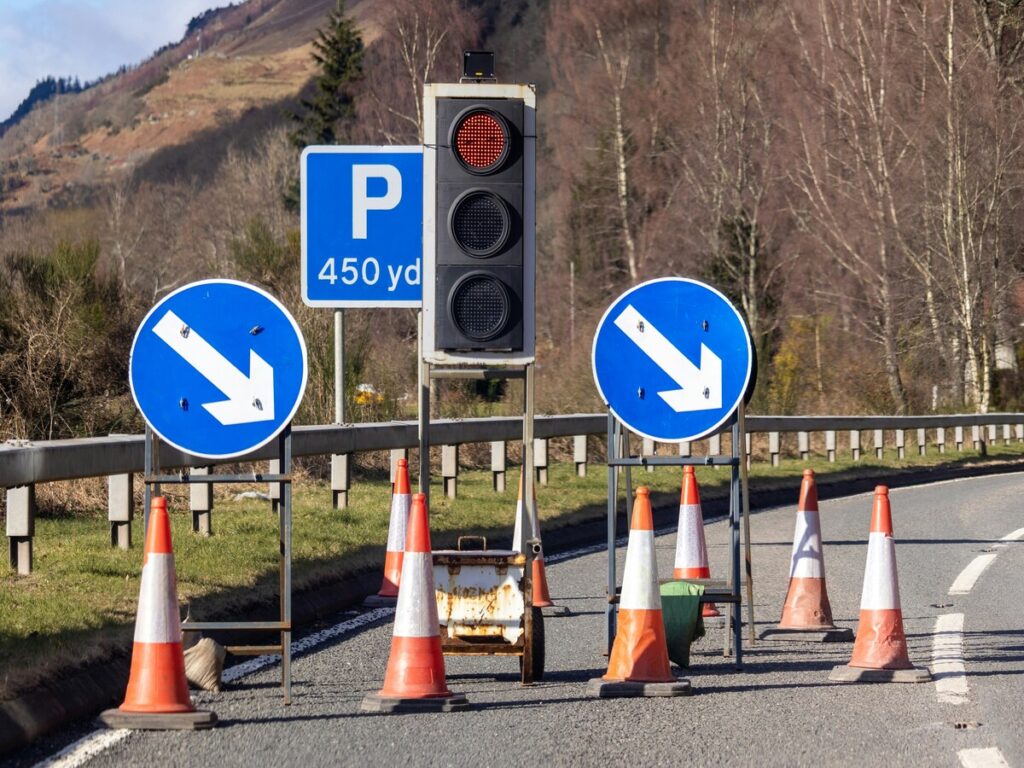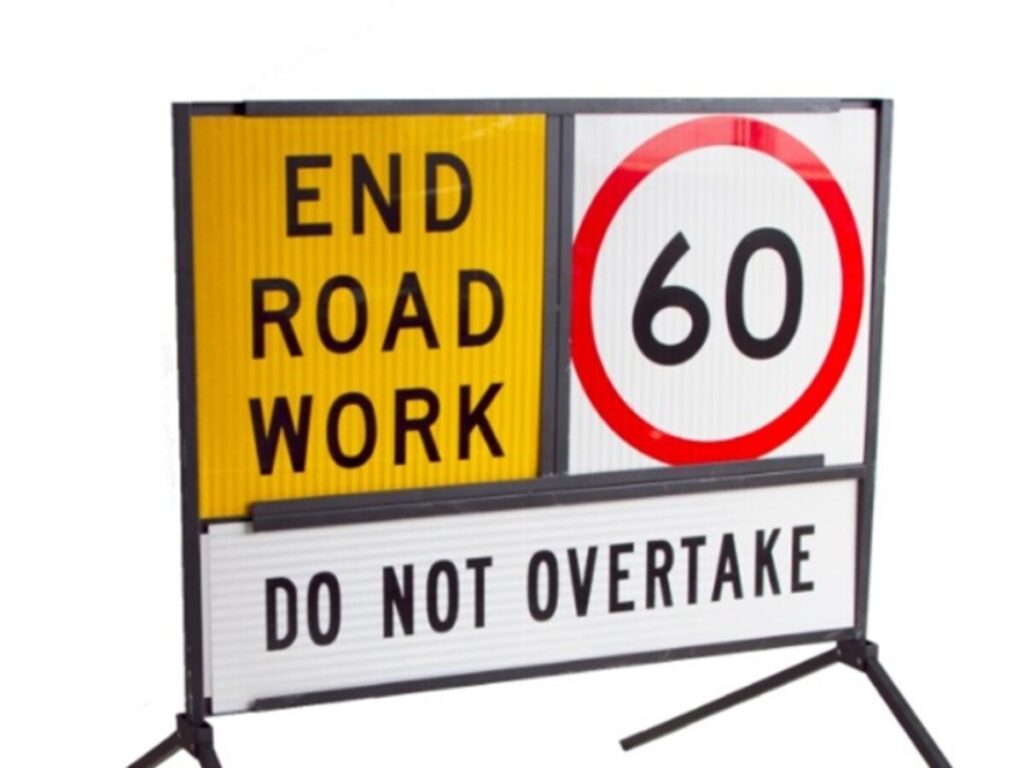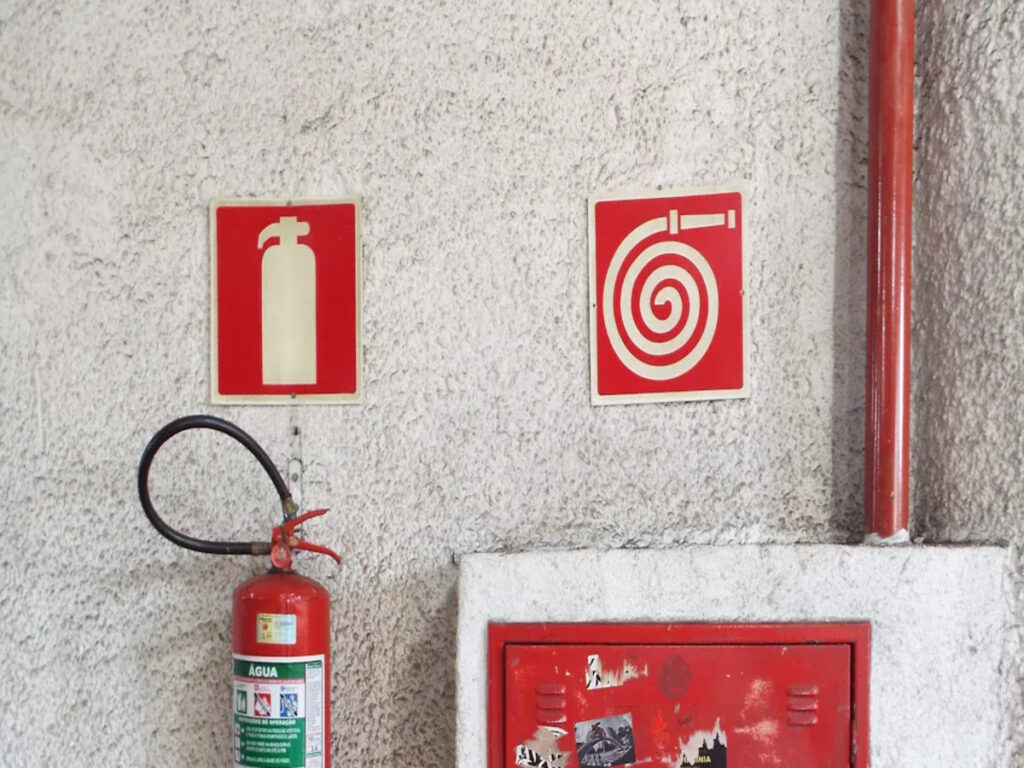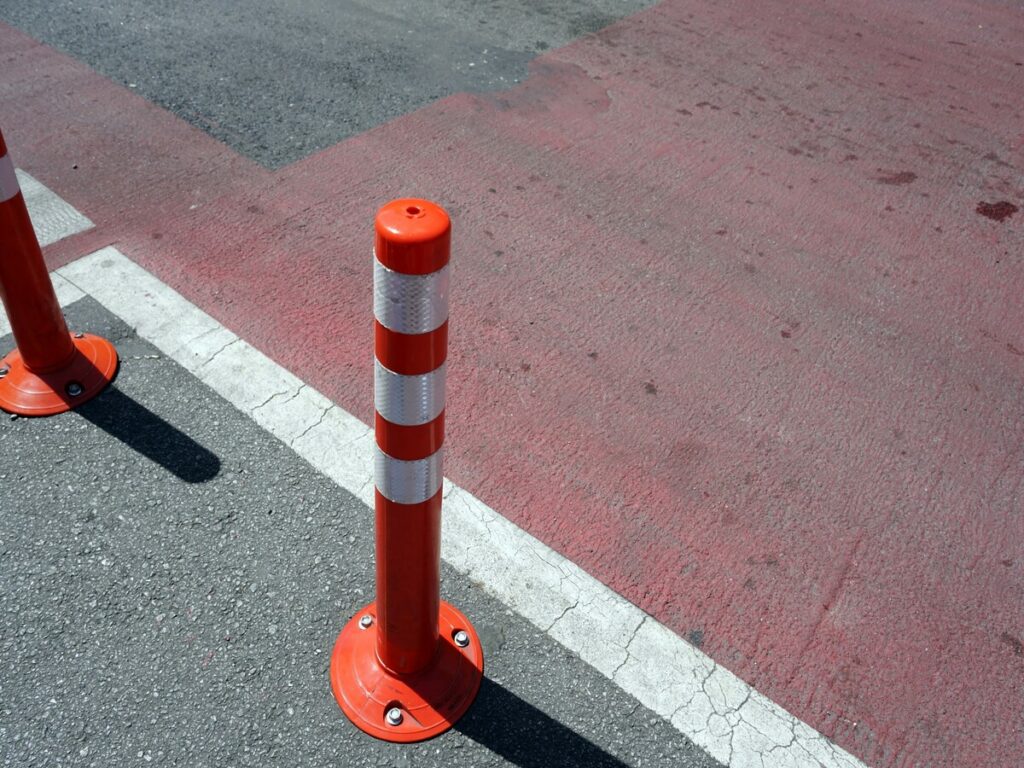
You see traffic control posts everywhere—from parking lots and construction sites to busy storefronts and event spaces. These posts help create order and protect people and property. Research shows that traffic control posts address risks like distracted driving and help manage high-risk areas.
Recognizing these benefits, OPTRAFFIC offers a comprehensive range of traffic control posts engineered for high visibility, durabilidad, and ease of deployment. Their solutions help manage distracted driving risks, guide vehicles in high-risk zones, and protect both people and property across parking lots, sitios de construcción, escaparate, y espacios para eventos.
Control de llave
- Traffic control posts like bollards and delineators improve safety by guiding vehicles and protecting pedestrians in places such as parking lots, sitios de construcción, escaparate, y eventos.
- Using the right type and placement of traffic control posts helps prevent accidents, protect property, and create clear, accessible paths for all people, incluyendo aquellos con discapacidades.
- Fixed bollards offer strong, protección permanente, while removable posts provide flexibility for events, entregas, or emergency access.
- Following safety standards and laws like OSHA, ADA, and MUTCD ensures your traffic control setup meets legal requirements and keeps everyone safe.
- Regular inspection and maintenance of traffic control posts keep them effective and visible, ayudándole a mantener un entorno seguro y organizado.
Why Traffic Control Posts Matter
Safety in Different Environments
You see traffic control posts in many places because they help keep people and property safe. These traffic control devices guide cars, proteger a los peatones, and organize busy areas. When you visit a parking lot, walk near a construction site, or shop at a busy storefront, you rely on these safety measures to reduce risks.
Many people feel unsafe walking in areas with heavy traffic. Acerca de 25% of adults in the US say traffic keeps them from walking where they want. Most of them worry about fast-moving vehicles. New or better sidewalks can help, but traffic control posts play a big role in making these spaces safer. When cities use traffic control devices like bollards and delineators, they help slow down vehicles and create clear paths for people.
Traffic control devices also improve how traffic moves. Por ejemplo, after cities installed new traffic light controllers, traffic flow improved by almost 2.5%. Congestion dropped by nearly 8%, and wait times at signals went down. These changes show that using the right traffic control equipment can make a big difference in safety and efficiency.
Tipos: Bollards and Delineators
You can choose from different types of traffic control posts, pero bollards and delineators are the most common. Bollards are sturdy posts that stand up to impacts. You often see them in front of storefronts or around parking lots. They stop vehicles from going where they should not and protect buildings and people.
Traffic control bollards come in many shapes and materials. Some are fixed in place, while others can be removed or moved as needed. Delineators are lighter traffic control devices. You see them marking lanes, autos guiantes, or creating temporary walkways. Both bollards and delineators help you manage traffic and keep everyone safe.
When you pick the right traffic control devices for your space, you help prevent accidents and protect your community.
Parking Lot Safety Applications
Estacionamiento can be busy and sometimes dangerous places. You see cars moving in many directions, people walking to and from stores, and new features like EV charging stations. You need strong safety measures to keep everyone safe. Dispositivos de control de tráfico, such as bollards and delineators, play a big role in parking lot safety. These barriers help you organize traffic, proteger a los peatones, y prevenir accidentes.
Prevención de accidentes
Accidents often happen in parking lots because drivers and pedestrians share the same space. You can use traffic control barriers to guide vehicles and keep them away from areas where people walk. Bollards and delineators mark the edges of driving lanes and parking spaces. They help drivers see where to go and stop them from making dangerous turns.
Many cities have seen fewer accidents after installing traffic control devices. Por ejemplo, in San Francisco, lane reductions and painted safety zones led to a 94% drop in vehicles traveling over 40 mph. Close calls between cars and pedestrians dropped from 14 to zero. These results show that traffic control barriers make parking lots safer for everyone.
Consejo: Place fixed parking lot bollards at the ends of parking rows to stop vehicles from cutting across spaces. This simple step can prevent crashes and keep traffic moving smoothly.
Protecting Pedestrians and Vehicles
You want to keep pedestrians safe as they walk to and from their cars. Traffic control bollards and barriers create clear walkways and protect people from moving vehicles. You can use physical barriers to separate sidewalks from driving lanes. This helps drivers see where people walk and gives pedestrians a safe path.
A table below shows how different cities improved pedestrian safety by using traffic control devices and barriers:
| Ubicación / Proyecto | Type of Improvement | Quantitative Evidence | Qualitative Evidence |
|---|---|---|---|
| Alexandria, Virginia (Commonwealth Avenue) | Painted curb extensions, median refuge areas, high-visibility crosswalks, señalización de peatones | Crossing distances reduced by up to 70% | Safety improvements aimed at protecting vulnerable pedestrians, especially school children |
| San Francisco, California (Safer Taylor Street) | Lane reductions, parking buffers, signal timing, painted safety zones | Vehicles over 30 mph decreased by 31%; encima 40 mph decreased by 94%; vehicle yielding to pedestrians increased by 25-58%; close calls dropped from 14 a 0 | Demonstrated significant improvements in pedestrian safety and driver behavior |
| Greenwich, CT (Greenwich Ave & Elm St) | Curb extensions, raised roadway, relocated lighting | Pedestrian crossing distance reduced by up to 40%; increased motorist awareness and slower speeds | Altos volúmenes de peatones y vehículos.; improved visual connection between drivers and pedestrians |
You can see that traffic control barriers and bollards help protect both pedestrians and vehicles. These applications work in lots of different parking environments, from shopping centers to schools.
ADA and Accessibility
You must also think about accessibility when planning parking lot traffic control. El Ley de Americanos con Discapacidades (ADA) sets rules for accessible parking spaces and walkways. You can use traffic control devices to mark accessible routes and keep them clear of vehicles. Bollards and delineators help you create safe paths for people with disabilities.
Por ejemplo, you can use collapsible parking posts to block off accessible parking spaces when needed. This keeps these spaces open for people who need them. You can also use traffic control barriers to guide people safely from their cars to building entrances.
Nota: Always check that your parking lot has enough accessible spaces and that barriers do not block ramps or walkways.
EV Charging Station Protection
Electric vehicle (EV) charging stations are now common in many parking lots. You need to protect these stations from accidental bumps and damage. Traffic control bollards work well for this job. You can place bollards around charging stations to stop cars from hitting the equipment.
You can use both fixed and removable bollards for EV charging station protection. Fixed bollards give strong, protección permanente. Removable or collapsible posts let you change the layout if you add more stations later. These traffic management barriers keep your investment safe and help drivers find the right spots.
Parking lot safety depends on the right mix of traffic control devices, barrera, y bolardos. You can use these tools to organize lots, proteger a los peatones, and keep vehicles safe. When you plan your parking lot traffic control, you make your property safer for everyone.
Construction Site Safety
Work Zone Separation
You face many risks on a construction site. Vehicles, equipo, and workers often share the same space. You need strong traffic control devices to keep everyone safe. Work zone traffic control uses bollards and barriers to separate vehicles from workers. This separation helps prevent accidents and keeps your project on track.
El Nioh safety report explains that Internal Traffic Control Plans (ITCPs) help you organize the flow of vehicles and equipment. These plans use traffic control barriers and bollards to create safe zones for workers. Estudios de la Associated General Contractors of America and data from the National Highway Traffic Safety Administration show that physical barriers reduce job site incidents and fatalities. You can trust that work zone traffic control makes your site safer.
- Traffic control posts and barriers reduce work zone intrusions.
- Bollards help guide vehicles and protect workers.
- Work zone traffic control lowers the risk of struck-by incidents.
Pasarelas peatonales
You must protect pedestrians who walk near or through construction areas. Traffic control devices like bollards and barriers create clear walkways. These paths keep people away from moving vehicles and equipment. When you use traffic control barriers, you help pedestrians move safely across the site.
Research shows that physical barriers, such as chains and posts, influence pedestrian behavior. In cities like Washington, DC, and Tokyo, these barriers reduced pedestrian crashes by nearly 20%. People felt safer and followed the marked paths. You can use bollards and traffic control devices to guide pedestrians and improve safety on your construction site.
Protección de equipos
Expensive equipment needs protection from accidents and damage. You can use traffic control barriers and bollards to shield machinery from vehicles and other hazards. Traffic control devices help you organize site traffic and prevent costly mistakes.
Proper traffic management plans, combined with regular inspections, keep your equipment safe. Sistemas avanzados, like AI monitoring, can alert you to possible collisions. These tools help you protect your infrastructure and reduce repair costs. When you use the right traffic control devices, you keep your construction site running smoothly and safely.
Storefront Protection
Crash-Rated Traffic Control Bollards
You want to keep your storefront safe from vehicle accidents and intentional attacks. Crash-rated bollards give you strong protection. These bollards stop cars and trucks from crashing into your building. You see them in front of banks, víveres, and busy sidewalks.
Crash-rated bollards must meet strict standards. The ASTM F3016 standard tests bollards for low-speed impacts, which are common in storefront crashes. This standard covers speeds below 30 mph. It helps protect against pedal errors and smash-and-grab attempts. The ASTM F2656 standard tests bollards for high-speed impacts, arriba a 50 mph. You find this level of protection at high-security sites.
When you look at crash-rated bollards, you see ratings like S10/P1 or S30/P1. These ratings show how much force the bollard can take and how far a vehicle moves past the bollard after impact. Lower penetration ratings mean better protection. International standards such as PAS 68 and IWA 14-1 also help you compare bollards worldwide.
Consejo: Always check the spacing and installation of your bollards. Proper placement makes your storefront safer.
Here is a quick guide to crash-rated bollard standards:
| Estándar | Speed Tested | Uso típico |
|---|---|---|
| ASTM F3016 | Arriba a 30 mph | Escaparate, áreas urbanas |
| ASTM F2656 | 30-50 mph | Banks, government sites |
| PAS 68/IWA 14-1 | Varía | International benchmarks |
Entryway Security
You want to protect your entryways from vehicle threats. Bollards give you a simple way to block cars while letting people walk through. You can choose fixed, desmontable, or decorative bollards to match your building’s style.
Place bollards at the edge of sidewalks or near doors. This keeps vehicles away from glass windows and doors. You also help guide foot traffic and make your entry safer for everyone. Many stores use traffic control bollards to protect outdoor seating, portavasos, and display areas.
You can pick bollards that match your brand or city design. Some bollards have lights or reflective strips for better visibility at night. Removable bollards let you open up space for deliveries or special events.
Nota: Always follow local rules for bollard placement to keep your entryway safe and accessible.
Seguridad de los peatones & Municipal Use
Sidewalk and Plaza Protection
You see sidewalks and plazas as busy spaces where people gather, caminar, and relax. Keeping these areas safe is important for everyone. You can use barriers and bollards to separate vehicles from pedestrian zones. These physical barriers help prevent cars from entering spaces meant for people. When you install bollards along sidewalks, you create a clear boundary that protects both pedestrians and infrastructure.
A government safety audit in Essex County, Nueva Jersey, found that poles or signs, including traffic control barriers, can sometimes block pedestrian paths. The audit showed that 4.8% of paths had poles or signs as obstacles, mientras 6.2% had parked cars blocking the way. Warning signs and signals also play a big role in pedestrian safety.
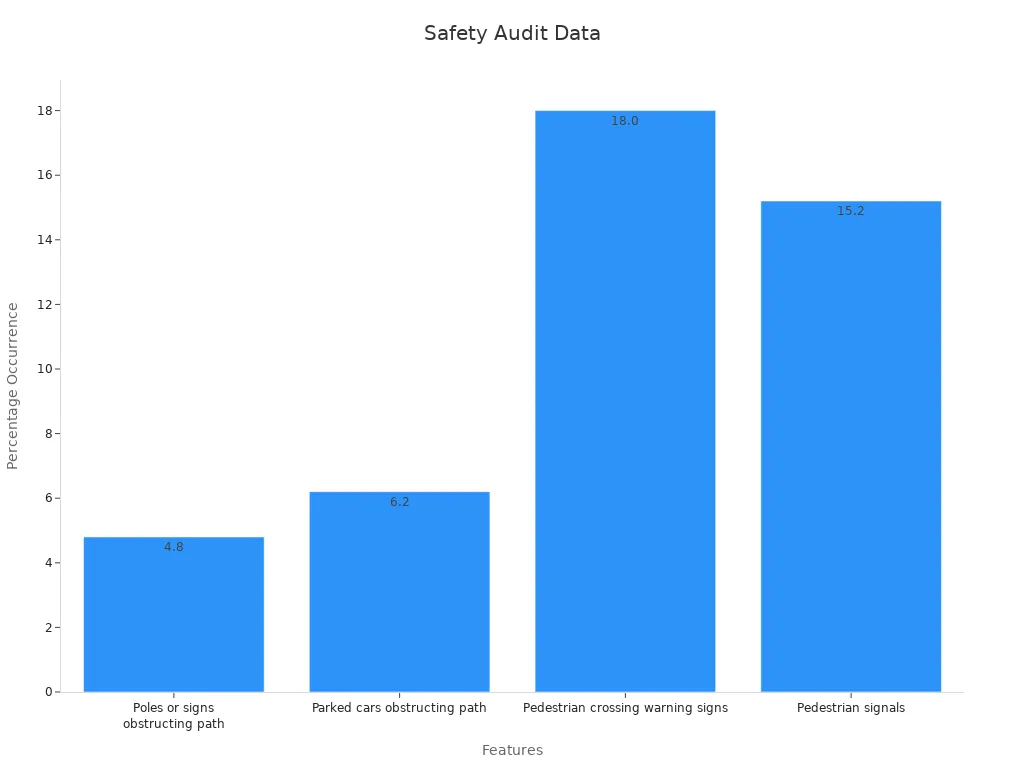
You can improve safety by placing bollards where they do not block walkways but still stop vehicles. This keeps paths open and safe for everyone.
Decorative and Removable Bollards
You want your city to look good while staying safe. Decorative bollards blend with urban design and often serve more than one purpose. Some have lights or planters, making public spaces more inviting. Removable and retractable bollards give you flexibility. You can allow emergency vehicles or maintenance crews to enter when needed, then restore barriers for daily use.
- Decorative bollards match city architecture and provide moderate protection.
- Removable bollards let you control access without losing security.
- Shallow-mount and modular designs make installation easier, especially near underground utilities.
- Multi-functional bollards can include lighting or seating, improving the space for everyone.
Regular inspections and maintenance keep these barriers working well. Many cities now use sustainable materials, such as recycled steel or plastics, to protect the environment while protecting infrastructure.
Government and Public Spaces
You find bollards and barriers around government buildings, parque, and plazas. These barriers protect critical infrastructure and keep public spaces safe. Crash-rated bollards stand up to vehicle impacts, making them a strong choice for high-traffic or sensitive areas. Flexible bollards work well in low-impact zones, guiding traffic without damaging vehicles or property.
Strategic placement of barriers ensures you protect infrastructure while allowing people to move freely. Smart bollard technology, with sensors and remote monitoring, helps cities manage safety and access more efficiently. Weather-resistant and flood-resistant designs keep barriers effective in all conditions.
Consejo: Always check that barriers do not block pedestrian access or create new obstacles. Good planning keeps everyone safe and public spaces welcoming.
Evento & Control de tráfico temporal
Gestión de multitudes
You often see large crowds at festivals, desfiles, and city events. Keeping everyone safe in these busy spaces is important. You can use bollards to guide people and block vehicles from entering pedestrian zones. These posts help you create clear paths for walking and gathering. When you set up a street fair or a public event, you need to control where people and cars go.
Many cities use bollards and other barriers to close streets for special events. Por ejemplo, Los Angeles’s CicLAvia and NYC DOT’s Weekend Walks show how you can use traffic control posts to manage crowds and keep vehicles out. These events use removable traffic control posts to block off streets, so you do not need police at every corner. Organizers also work with volunteers and set up parking restrictions to help with traffic management.
- Temporary street closures use removable barriers to keep cars away from crowds.
- Community outreach and clear signs help everyone know where to go.
- Volunteers and staff guide people and answer questions.
When you plan ahead and use the right posts, you make events safer and more enjoyable for everyone.
Flexible and Removable Posts
You need flexibility when setting up for events or temporary changes. Removable bollards let you open or close areas quickly. You can place these posts at entrances, salidas, or along walkways. Después del hecho, you can remove them and return the space to normal use.
Removable bollards work well for markets, conciertos, y acceso de emergencia. You can also use them for pop-up bike lanes or temporary parking changes. These posts are easy to install and move, so you can adjust your layout as needed. The FHWA recommends using trained flaggers and traffic control officers along with bollards to direct both cars and people during busy times.
Bollards give you a strong, visible barrier that helps everyone know where to go. You can choose different colors or add reflective tape for better visibility at night. When you use bollards and removable posts together, you keep your event safe and organized.
Choosing the Right Post
Fijo VS. Desmontable
When you choose traffic control posts, you need to decide if you want fixed or removable options. Fixed bollards stay in one place and give strong, protección permanente. You often see them in front of storefronts or around important equipment. Removable bollards work well when you need flexibility. You can take them out for deliveries, eventos, or emergency access. Removable posts help you change your layout quickly.
Consejo: Use fixed bollards for high-security areas and removable ones for spaces that need to open up sometimes.
Material y durabilidad
You should think about what your bollards are made of. Steel bollards give you the most strength and last a long time. Plastic or composite bollards work well for temporary setups or places with less risk. Some bollards have covers that protect them from weather and make them look better. You can also find bollards with reflective strips or lights for better visibility at night.
A table can help you compare materials:
| Material | El mejor uso | Durabilidad | Opciones de visibilidad |
|---|---|---|---|
| Acero | Escaparate, equipo | Alto | Sí |
| Plástico | Eventos, temporary zones | Medio | Sí |
| Compuesto | Estacionamiento, pasarelas | Medio | Sí |
Best Fit by Scenario
You want to match your traffic control post to your specific needs. Scenario-based analysis helps you do this. Experts use past cases and project details to find the best solution for each situation. Por ejemplo, you might need strong bollards for a busy storefront but lighter posts for a festival. Decision tools and case studies show that you should look at your goals, the risks, and how people use the space. Por aquí, you pick the right bollards for safety and efficiency.
When you use the right bollards in the right place, Protege a la gente, propiedad, and keep traffic moving smoothly.
Estándares de cumplimiento y seguridad
OSHA and Construction
You must follow Reglas de OSHA when you work on a construction site. OSHA stands for Occupational Safety and Health Administration. This agency sets standards to keep workers safe. You need to use traffic control posts and barriers to protect people from moving vehicles and equipment. OSHA requires you to mark work zones clearly. You should use signs, conos, and bollards to show where it is safe to walk or drive. Si no sigues estas reglas, you could face fines or accidents. Always check the latest OSHA guidelines before you start a project.
Consejo: Review OSHA’s “Safety and Health Regulations for Construction” to make sure your site meets all safety requirements.
ADA and Parking Lot Safety
You must also think about people with disabilities when you plan your parking lot. La Ley de Americanos con Discapacidades (ADA) gives rules for accessible spaces. You need to mark these spaces with clear signs and use traffic control posts to keep them open. Bollards can help protect ramps and walkways. You should make sure that nothing blocks the path from the parking area to the building entrance. This helps everyone move safely and easily.
A simple checklist for ADA compliance:
- Mark accessible parking spaces with signs.
- Use bollards to protect ramps.
- Keep walkways clear at all times.
MUTCD and Local Rules
Debe seguir el manual en dispositivos de control de tráfico uniformes (Muescato) when you set up traffic control posts. This manual gives you the rules for signs, señales, y marcas. You need to use the right colors and shapes for your posts. Local laws may add more rules for your area. Always check with your city or county before you install new safety devices. Following these standards helps you keep people safe and avoid problems with the law.
Nota: Using the correct traffic control posts helps you meet both national and local safety standards.
Choosing the right traffic control posts helps you protect people, vehículos, and property in every setting. You improve safety and meet important rules when you match each post to its best use.
- Review your site’s needs before you decide.
- Ask safety experts for advice.
- Check local laws for compliance.
For more tips, explore guides from the Federal Highway Administration or your city’s public works department.
Preguntas frecuentes
What is the difference between a bollard and a delineator?
A bollard is a sturdy post that stops vehicles. You often see it in front of stores or sidewalks. A delineator is lighter and marks lanes or walkways. You use delineators for guiding traffic, not stopping it.
How do I choose between fixed and removable posts?
You pick fixed posts for permanent protection, like storefronts or equipment. Removable posts work best when you need to open spaces for deliveries or events. Think about how often you need to change your layout.
Are traffic control posts required by law?
Many places require traffic control posts for safety. You must follow rules from OSHA, ADA, y MUTCD. Always check your local laws before you install any posts.
Can I use decorative bollards for safety?
Sí, you can use decorative bollards for both safety and style. Many cities use them to match the look of sidewalks or plazas. Make sure the bollard still meets safety standards.
How do I maintain traffic control posts?
Inspect posts often for damage or wear. Límpielos para mantenerlos visibles.. Replace any broken or bent posts right away. Regular checks help you keep your area safe.




